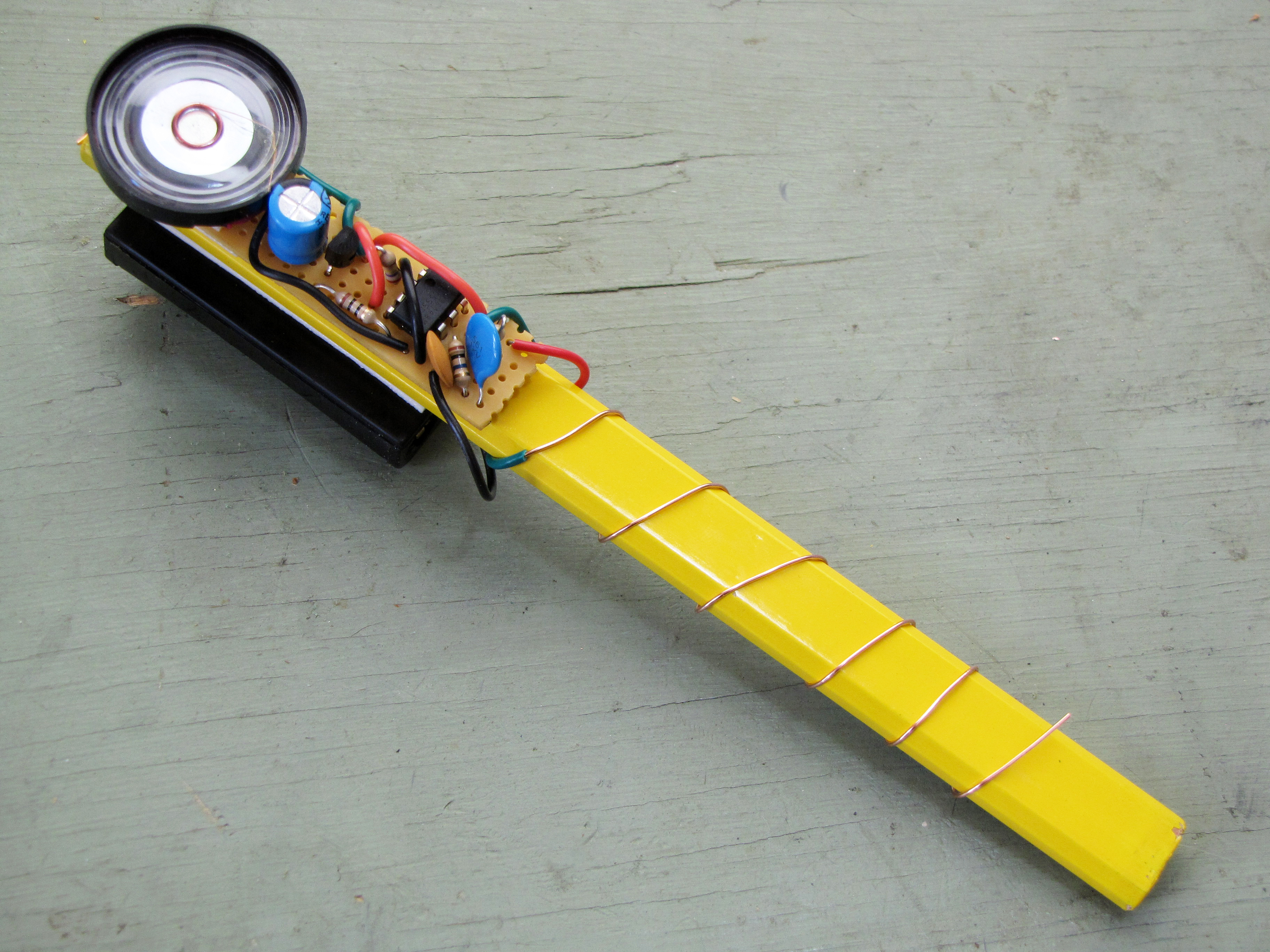Drawdio is a simple electronic sound synthesizer built onto a pencil! Designed by Jay Silver, then a student in the Lifelong Kindergarten group at the MIT Media Lab, the Drawdio circuit plays a musical tone with a frequency that varies based on the resistance between two points. The wire wrapped around the pencil handle is one point, and the pencil lead itself is another. When you hold Drawdio in your hand, your body becomes part of the resistive loop, and you can do all kinds of fun tricks, like draw yourself a piano and play a little tune!
The Drawdio circuit is based on the classic 555 timer chip. To save space on batteries, we’re using a more modern low-power version of the 555 that will run on 3 volts, but otherwise it behaves just like a standard 555. Wired like this, the 555 operates in so-called astable mode, outputting a continuous stream of pulses from pin 3. The frequency of those pulses can be controlled by changing the values of the resistors and capacitors connected to pins 2 and 7. Since the contacts are arranged to put the user’s body into the resistive loop, the frequency output by the 555 naturally varies depending on what she or he is touching. The transistor amplifies those pulses, which emerge from the speaker as audible sound.




